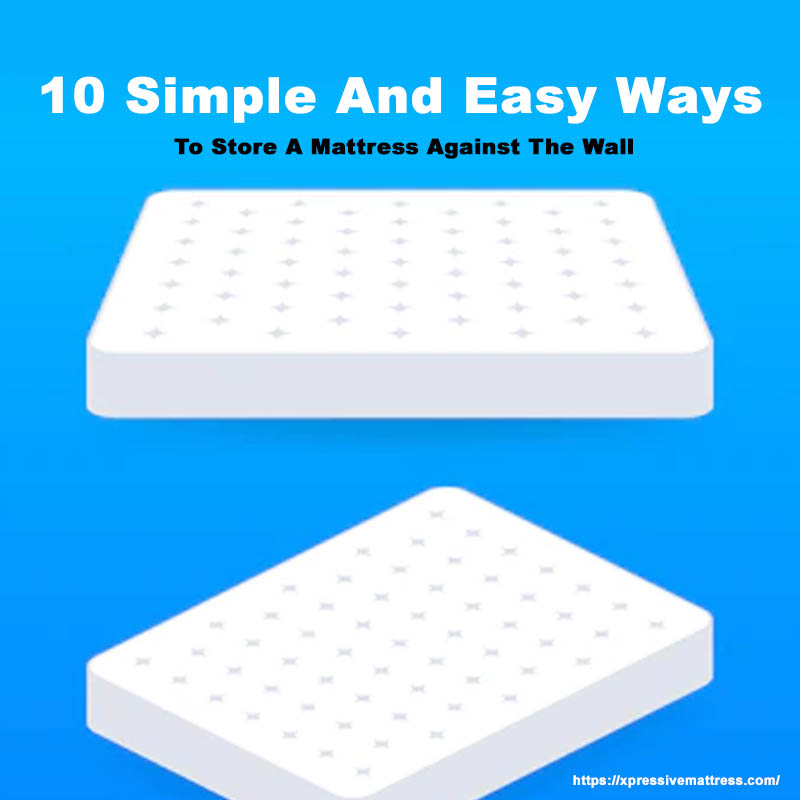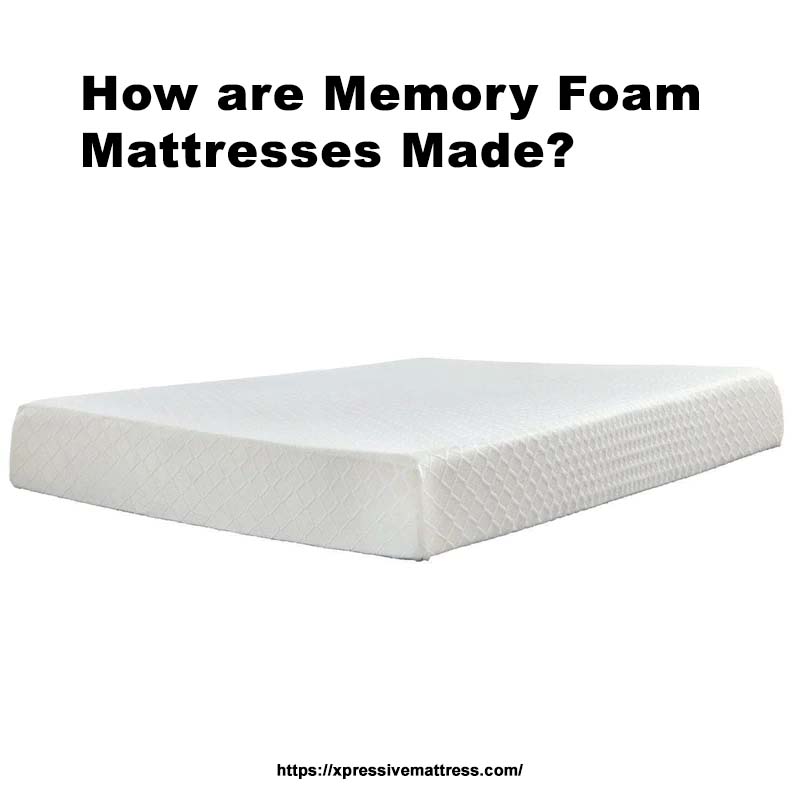Sealing a mattress in plastic is an easy and effective way to protect it from dust, dirt, moisture, and other elements.
It’s also great for keeping your bed clean while you’re away on vacation or if you have allergies!
The process of sealing the mattress doesn’t take long at all – just some simple steps:
- Measure out enough plastic wrap to cover the entire surface area.
- Securely tape down each side with packing tape.
- Make sure there are no gaps between pieces of wrapping paper so air can’t get through.
- Finally, seal off any openings around the edges using more packing tape.
This method works well because it keeps my mattress safe, and I don’t need to worry about extra furniture covers taking up space when they aren’t required.
What Materials Are Required To Seal A Mattress In Plastic?
To seal a mattress in plastic, you will need the following materials:
- Plastic sheeting or shrink wrap large enough to cover your mattress.
- Tape (packing tape works best).
- A sharp pair of scissors for cutting the plastic sheeting/shrink wrap to size if necessary. All edges must be sealed tightly so no air can get inside, which could cause mold growth on your mattress over time!
Additionally, it’s recommended that you use two layers of protection when sealing a mattress.
One layer should be placed directly onto the bed’s surface before wrapping.
And another larger piece around both sides ends together like an envelope shape. That helps as extra security against dust mites and other allergens.
What Is The Purpose Of Sealing A Mattress In Plastic?
The purpose of sealing a mattress in plastic is to protect it from dust, dirt, and other contaminants.
It also helps keep the mattress clean by preventing moisture buildup inside the cover.
Sealing your mattress can help extend its life span and improve comfort levels when sleeping on it.
Here are some important facts about why you should seal your mattress:
- Prevents allergens such as pet dander, pollen, or mold spores from entering the material.
- Helps maintain hygiene standards for those with allergies or asthma.
- Keeps out bed bugs that may be present in used mattresses.
- Protects against spills and stains that could damage fabric fibers over time.
- Reduces wear-and-tear caused by regular use due to friction between sheets/blankets.
- Enhances overall sleep quality since air circulation is improved within sealed covers (no trapped heat).
- So if you want to ensure maximum protection for your investment, seal up any new mattresses before using them!
How To Properly Measure The Mattress Before Sealing?
Measuring a mattress before sealing is important in ensuring you get the right size.
Here are some tips on how to properly measure your mattress:
- Measure from side-to-side and top-to-bottom using a tape measure or ruler.
- Make sure to include any extra padding when measuring.
- Consider the thickness of both sides of the bed frame if applicable.
- Write down all measurements for reference later (length, width, and depth).
- Check the manufacturer’s instructions, as they may have specific requirements regarding sizing and fitment.
- Measure twice, just to be sure!
- Once you’ve taken accurate measurements, it’s time to seal your new mattress. Please ensure there aren’t any gaps between it and its base so no dust can enter through them, which could affect comfort levels over time!
How To Secure The Plastic Sheet To The Mattress?
Securing a plastic sheet on the mattress is an important step in protecting your bed from dust, dirt, and other allergens.
Here are some tips on how to do it:
- Start by measuring the size of your mattress, so you know what plastic sheet will fit best.
- Purchase a matched vinyl or polyethylene cover that fits snugly around all sides of the mattress.
- Place one side under each corner at either end and tuck them securely into place with tape or pins if necessary.
- Secure any loose edges along both lengthwise sides using safety pins, staples, or adhesive strips for extra protection against moisture buildup inside the sheets.
- Finally, use elastic straps across width-wise sections near head/footboard areas and the middle section (if applicable) for added security and stability when sleeping!
What Are The Precautions To Be Taken While Sealing The Mattress In Plastic?
When sealing a mattress in plastic, it is important to take certain precautions.
- Ensure the area you are working in is clean and free of dust or debris that could get trapped inside the bag with your mattress.
- Also, ensure no sharp objects nearby may puncture the plastic while handling it. This includes any jewelry, such as rings or watches.
- Use gloves when handling both sides of the sealed bag so that oils from your hands do not transfer onto either side of the material, causing discoloration over time.
- Lastly, check for airtightness before completely closing off one end. If necessary, add extra tape around all edges where two pieces meet together to create an even more secure seal!
Here’s a list summarizing these points:
- Clean workspace
- No sharp objects nearby.
- Wear protective gloves
- Check for air tightness.
- Add additional tape (if needed)
How Long Can A Mattress Be Stored In Plastic?
A mattress can be stored in plastic for a long time, but it is important to take certain precautions.
Here are some tips:
- Make sure the area where you store your mattress has good ventilation. This will help prevent mold and mildew from forming on the surface of the bedding material.
- Keep away from direct sunlight or heat sources, as these could cause damage over time.
- Check regularly that there isn’t any moisture buildup inside the storage bag. If so, open it up and let air circulate until dry before resealing again with tape or zip ties.
- If possible, rotate your mattress every few months while still sealed in its protective covering to ensure even wear across all surfaces of sleep support system components (e.g., coils).
This helps maintain comfort levels too!
In general terms, mattresses should last between 8–10 years when properly cared for.
However, storing them correctly wrapped tightly within their original packaging may extend life expectancy by several more years.
That depends upon usage frequency and the environmental conditions they’re exposed to during use/storage periods!
How To Remove The Plastic Sheet From The Mattress?
Removing the plastic sheet from a mattress is an easy process.
Here are some steps to follow:
- Gather your supplies – scissors, tape, and something sharp like a knife or box cutter.
- Locate the seams of the plastic sheet – these can usually be found at each corner of the bed.
- Cut along one side seam with scissors or another cutting tool until completely removed.
- Peel away any remaining pieces that may still be attached to either end of this first piece using your fingers (be careful not to tear them).
- Repeat Steps 2-4 for all four sides until no more plastic is left on the mattress!
- Use tape if necessary to secure any loose edges before disposing of them properly according to local regulations.
- Enjoy sleeping comfortably without worrying about dust mites and allergens collecting inside your new clean mattress!
In Conclusion: How To Seal A Mattress In Plastic?
In conclusion, sealing a mattress in plastic protects it from dust and other allergens.
It also helps keep the mattress clean for longer periods.
The process itself is relatively simple: first, measure your bed size.
Then purchase enough heavy-duty plastic wrap or bag that will fit around the entire surface area of your mattress.
Next, carefully place the cover over the top of your bed and secure it with tape at all four corners.
Finally, seal up any remaining openings using additional packing tape if necessary.
Sealing a mattress can be done quickly and easily by anyone with access to these materials – no special tools are required!
This method protects against dirt buildup while allowing you to comfortably sleep on a fresh-smelling bed every night!



